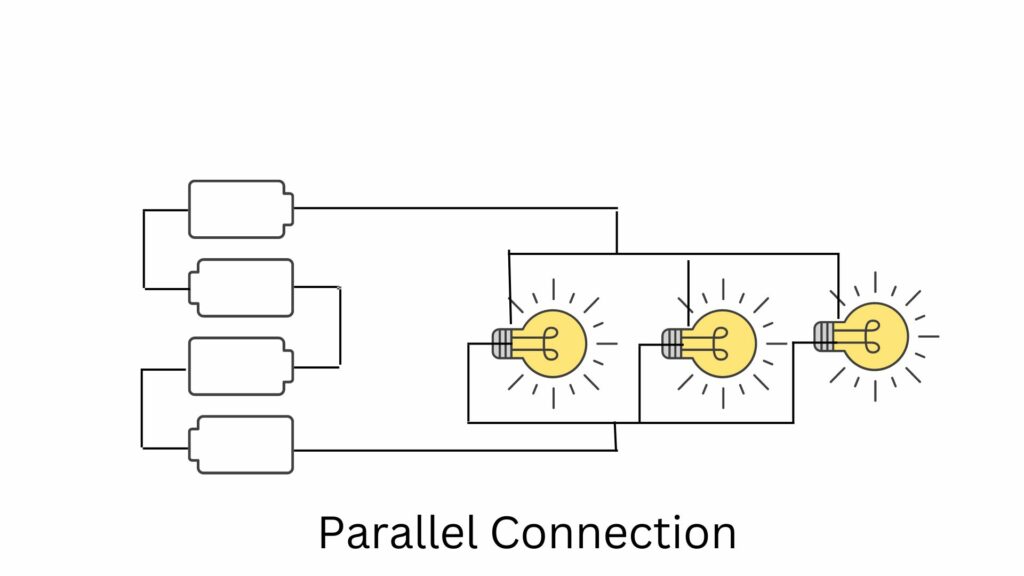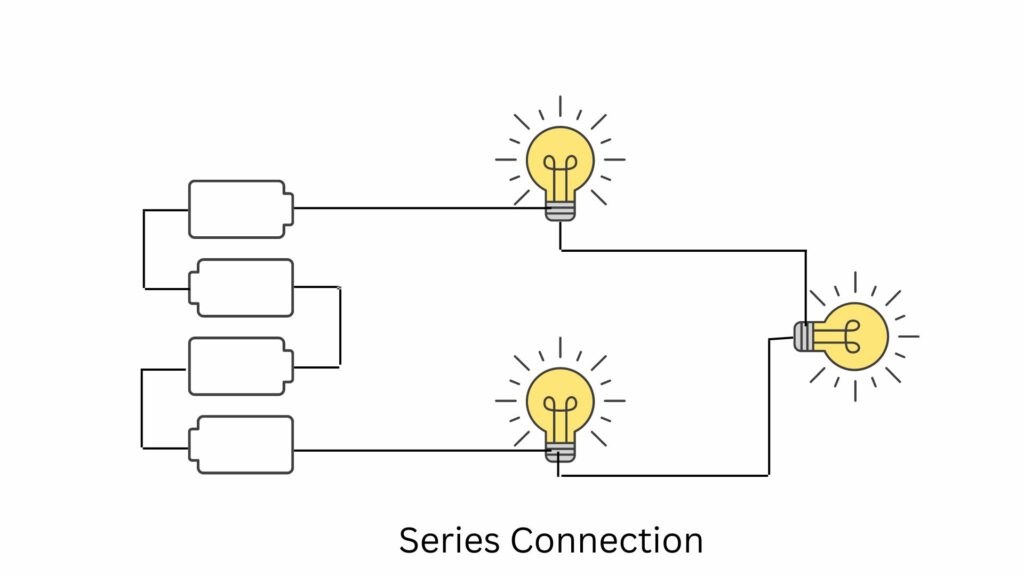Bulbs burn out all the time. In most cases, this is not a big deal. But what if it occurs in a parallel circuit? What about a series circuit? Which arrangement is more convenient? This guide will tell you.
What Happens In A Parallel Circuit When One Bulb Burns Out?
In a parallel circuit, each bulb is on a separate loop. The current may split at times. It will follow different paths. But it will come together at specific points. This arrangement is appealing because nothing happens when you remove one bulb from the circuit. The other bulbs will continue to generate light because each load exists on a separate loop.
The remaining bulbs will get brighter because taking one bulb away allows more current to flow to the remaining bulbs. The more current a bulb has, the brighter it glows.
The concept is less complicated than people realize. Consider the following:
1). To understand parallel circuits, you should start from the beginning. For your bulbs to work, electrons must flow. Electricity is basically the flow of electrons.
2). Electricity can only flow if you have a closed circuit that provides a continuous path.
3). Electricity will encounter resistance as it flows through a circuit. The higher the resistance, the more work the circuit must do to operate the bulb. In fact, significant resistance can lower the brightness of the bulb.
4). A complete circuit requires a power source that generates the current and a conductor that provides a path for the current to follow. In a way, the circuit forms a loop. Current flows out of the power source and back into it.
5). Every circuit requires a load that uses the current the power source has generated. The presence of a load prevents short circuits.
5). Now that you know how a circuit works, you can start exploring parallel circuits by comparing the configuration to series circuits. In a parallel circuit, you connect the bulbs in parallel. This gives you the same potential difference across each component’s end. Check the basic diagram showing the differences between parallel and series circuits.


Loads in a series circuit are connected in series, one after the other. You have one simple loop. You can probably guess what happens if you interrupt the circuit by taking one of the loads out.
Advantages of Parallel Circuits
Your contractor is more likely to arrange the bulbs in a parallel circuit because the arrangement has several benefits, including:
1). Every bulb gets the same voltage.
2). Because the bulbs sit on separate loops, you can add components without affecting the other loads. In other words, adding a bulb doesn’t interfere with the operations of the other bulbs on the circuit. Removing a bulb is equally harmless.
What if a bulb burns out? Once again, nothing will happen because the burnt-out bulb sits on a separate loop.
3). Because the loads exist on different loops in the circuit, they operate independently. You don’t have to activate all of them because you switched one of the devices on. Each device has a switch that only controls that device.
4). Unlike a series circuit, adding more devices to a parallel circuit won’t increase the resistance. In fact, additional loads reduce the resistance by elevating the number of pathways.
5). Those additional paths are advantageous because the circuit can work even when a fault occurs. The current can still reach its destination by following a different path. This redundancy makes parallel circuits more reliable.
6). Parallel circuits are easier to configure. They don’t present the same wiring challenges you find in series circuits.
Disadvantages Of Parallel Circuits
Parallel circuits are more reliable. But if that is true, why do people use series circuits? Parallel circuits are not perfect. For some consumers, the following weaknesses are off-putting:
1). Parallel circuits are great because they provide multiple pathways for the current to follow. But they also require a lot of wiring. Even if you can afford the wires, the configuration is incredibly messy.
2). The voltage remains the same. This is appealing, especially in comparison to series circuits where bulbs are dimmer because the voltage is split. But it can become a challenge when you want to increase the voltage. Although, voltage regulators can solve this problem.
3). If your application requires a constant current, parallel circuits are problematic because the total current tends to increase. Sciencing wants you to determine whether or not the power supply can withstand the increase before you install a parallel circuit.
4). Parallel circuits are difficult to diagnose. It may take you longer than expected to pinpoint the source of a malfunction.
What About In Series Circuit? What Happens When One Bulb Burns Out?
If one light dies, you lose every load in the series. Series circuits are tricky because the current from the power source flows through a single path.
This differs from parallel circuits where the charge follows multiple paths. If the electricity can only follow one route, the removal of one bulb prevents the current from completing its journey. This doesn’t mean series circuits are completely useless. Surprisingly, the configuration has advantages, including:
1). Overheating is less of an issue. Remember that bulbs in parallel circuits are brighter than lights in series circuits.
2). You can increase the voltage. Adding more power sources (such as batteries) can elevate the power at your disposal.
3). If you have a portable device, a series circuit will preserve the battery life because series circuits promise superior efficiency in these situations.
These factors do not make series circuits a worthwhile investment. They still have significant weaknesses. For instance, adding loads to the circuit will increase the resistance. The advantages should encourage you to consider your options more carefully. Don’t be so quick to select a parallel circuit when a series circuit can serve you better.
Related Post:

